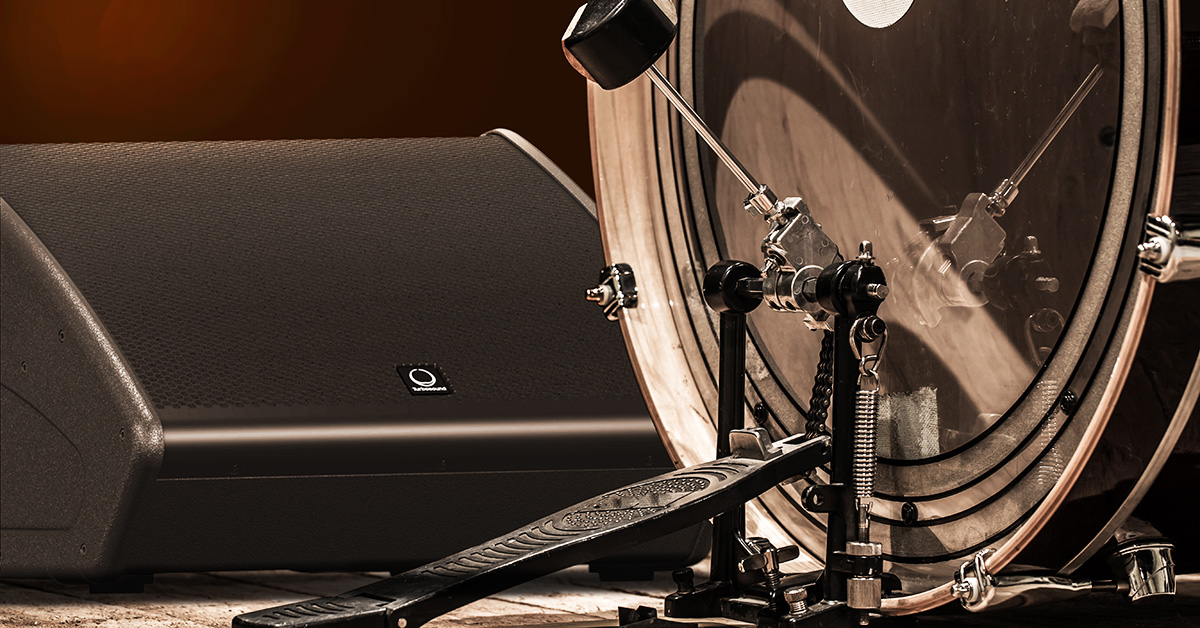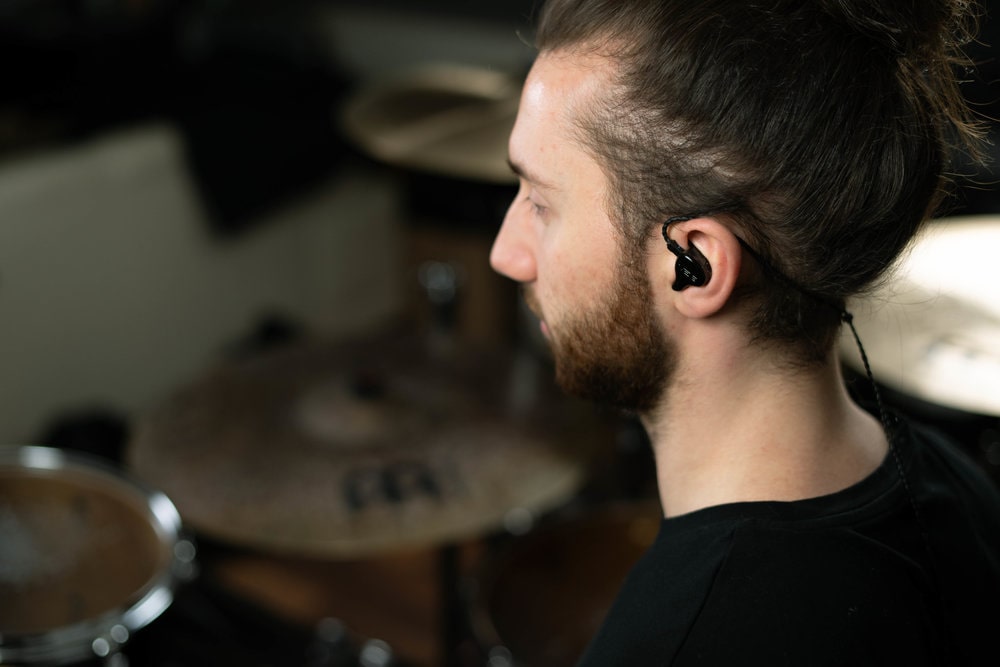For a long time, drummers and the other musicians didn’t have any other option for monitoring the sound except for the monitor speakers placed on the stage.
It was not perfect, but it was working out.
However, when in-ear monitors showed up, a new and possibly better option gained popularity.
Unlike monitor speakers, in-ear monitors (IEMs) isolate you from the outside sounds, which is good not only for hearing the music clearly but for your ear protection too.
Still, monitor speakers have some advantages.
It’s usually less expensive to get them than IEMs.
Also, not being isolated from the stage sounds makes you more involved in what’s happening outside your ears.
If you are still hesitant about the choice, check out the detailed comparison of drum monitor speakers and in-ear monitor below.

Drum monitor speakers
The stage monitoring system was pretty much the same for years.
Musicians could listen to what they are playing through monitors, small speakers placed strategically on the stage.
There are two kinds of monitor speakers:
- floor monitors (or wedges)
- side-fill monitors
A special kind of side-fill monitor is called drum fill, a speaker that delivers exceptionally high volumes to assist drummers in hearing other band members above the acoustic sound of their drums.
Pros
Drum monitor speakers have several advantages, which is why some drummers still prefer them over in-ear monitors.
Price
Drum monitors are less expensive than IEMs.
High-quality IEMs can be a pricey investment, while drum monitors are usually provided as a part of the sound system.
Even if you buy your own monitors, they will still be cheaper than in-ear monitors.
Multi-functionality
The same monitor speaker can be used by different members of the band.
This can save the costs as well as the amount of equipment you need to carry.
Stage experience
With monitor speakers, you are not isolated from the outside sounds.
This means you can hear the crowd and feel involved in the atmosphere.
Also, you are more connected to your bend members and share the complete stage experience with them.
Cons
There are some main disadvantages of drum monitors that in-ear monitors tried to overcome.
High volume
The sounds from front speakers and stage monitors can be quite loud and combined with the volume of your drums, it can be a pretty harsh experience for your ears.
If band members start to raise the volume of their own monitors to hear themselves better, the stage can become an extremely noisy place.
The monitors’ loud sound gives a higher chance of feedback, which is never a pleasant thing.
Size
Compared to IEMs, monitor speakers are much bigger and heavier equipment.
It means monitors will take a lot of space when traveling and on stage.
Also, it will take more time and effort to set them up.
Sound limitations
On the monitor speakers, you will listen to the monitor mix.
For a drummer, it means that you cannot use tools like metronome/click or adjust the volume of certain frequencies because everyone else could hear it too.

In-ear monitors for drummers
In-ear monitors are earplug-like devices that you can insert inside your ears and hear a customized audio mix.
It means you don’t need to listen only to the monitor mix, but you can add the “click” sound or customize whatever you want to hear.
Pros
Many musicians agree that in-ear monitors are a superior monitoring solution compared to wedges.
Here are the main reasons why the majority of drummers nowadays choose IEMs over drum monitors.
Sound quality and isolation
In-ear Monitors have superior sound quality as compared to wedges.
They deliver a broad frequency spectrum with clear and crisp sound at a perfect volume.
Above all, the main advantage is that IEMs isolate you from the background sounds.
It’s particularly useful for drummers because your drums’ beating is the main sound you can hear while playing.
Hearing protection
Sound isolation is also important for your hearing protection.
Since you hear the sound at a lower volume and your ears are isolated from the stage noise, IEMs are the main tool for saving your ears from damage.
Custom mix and control
As we mentioned, with IEMs, you can choose what you will listen to, at which volume, and nowadays, you can manipulate all that yourself.
The custom mix can be adapted to your needs, which means you can choose which frequencies you would like to hear better and use the “click” sound or the backing track.
Controlling what you are hearing is important for a perfect setting adapted to your preferences and needs.
Cons
Although IEMs sound like a perfect successor of monitor speakers, there are some downsides.
Price
Good in-ear monitors can be expensive.
While monitor speakers you even don’t need to buy, since they are usually included in the stage or studio sound system, IEMs are yours to take care of, and they are pricey.
Separation
Good sound isolation also means you will be separated from what’s happening on the stage and in the crowd.
If you are completely isolated from the background sound, you won’t hear the real effect of the live music.
The lack of live sounds can make you feel detached from the atmosphere and experience of the concert.
Should drummers use in-ear monitors or monitor speakers?
Regardless of which one is objectively better, the choice between IEMs and drum monitors is ultimately yours.
Many drummers turned to IEMs due to many advantages in sound and functionality.
However, some of them still stick to the good old wedges, or they use both.
My name is Denis. I am a drummer, percussionist, music enthusiast, and blogger. Drums have been my passion for 15 years now. My idea is to write about the things I like and I am interested in. I want to share my drum passion with fellow musicians who walk, talk, and breathe drums.






